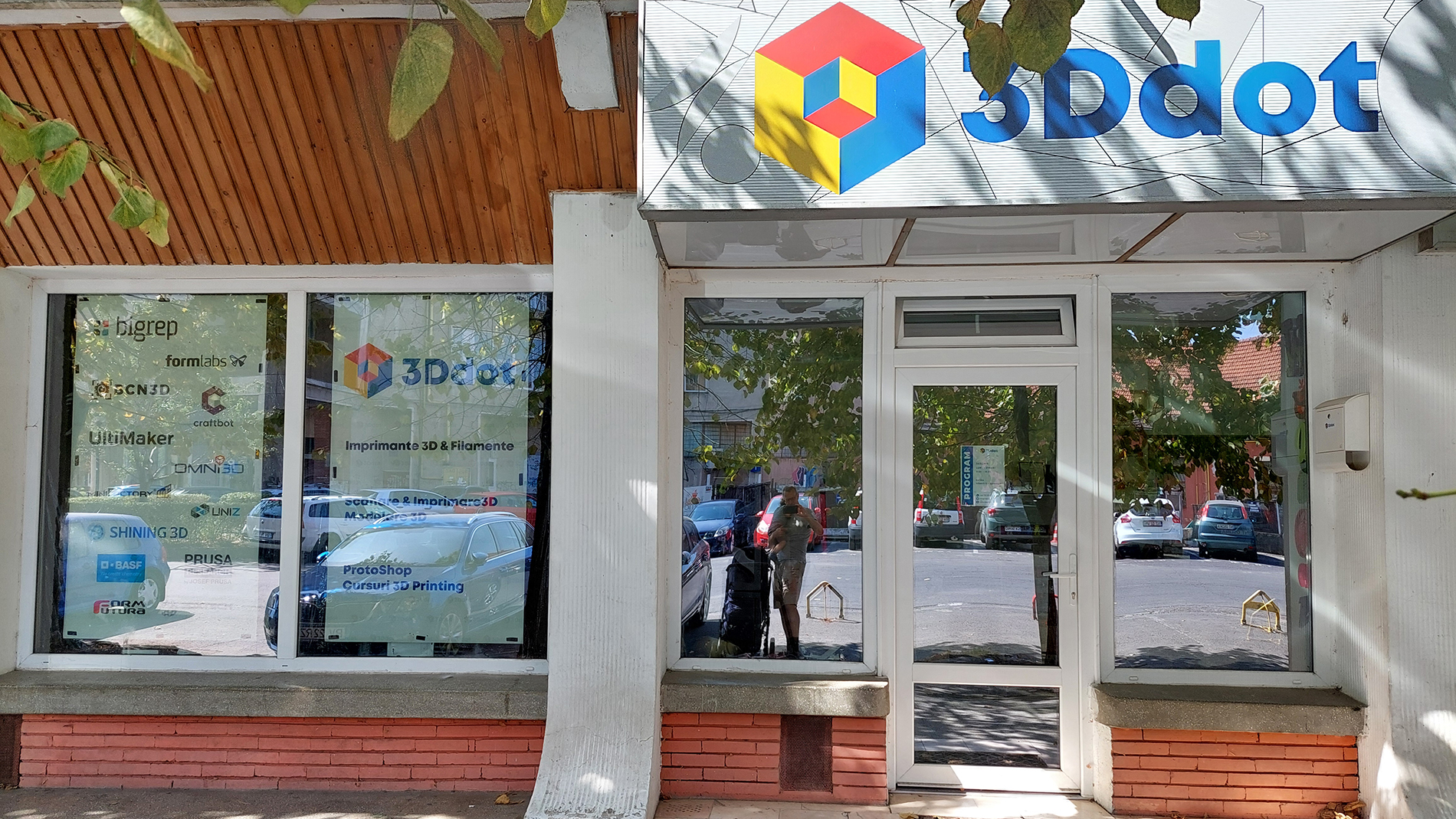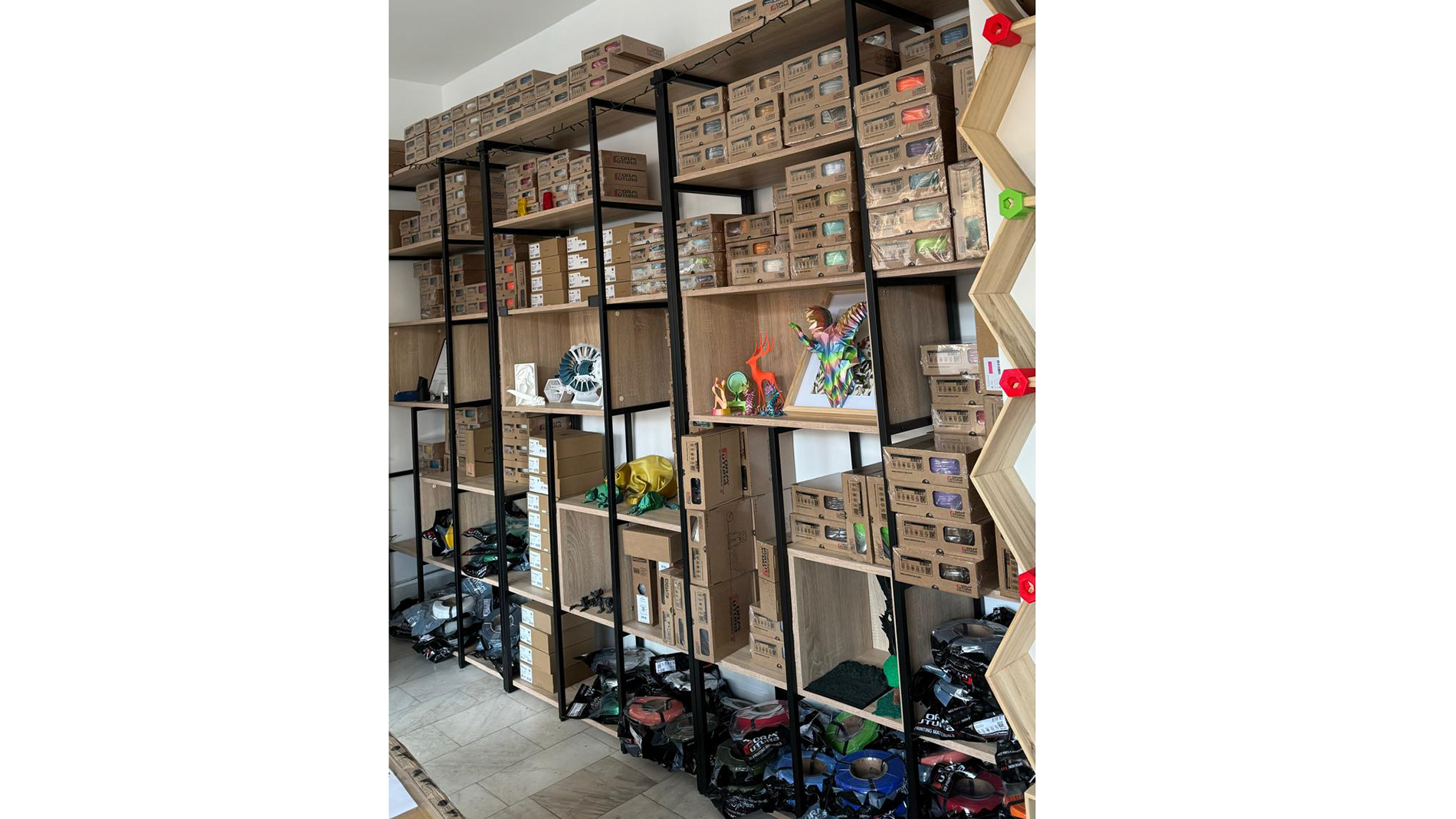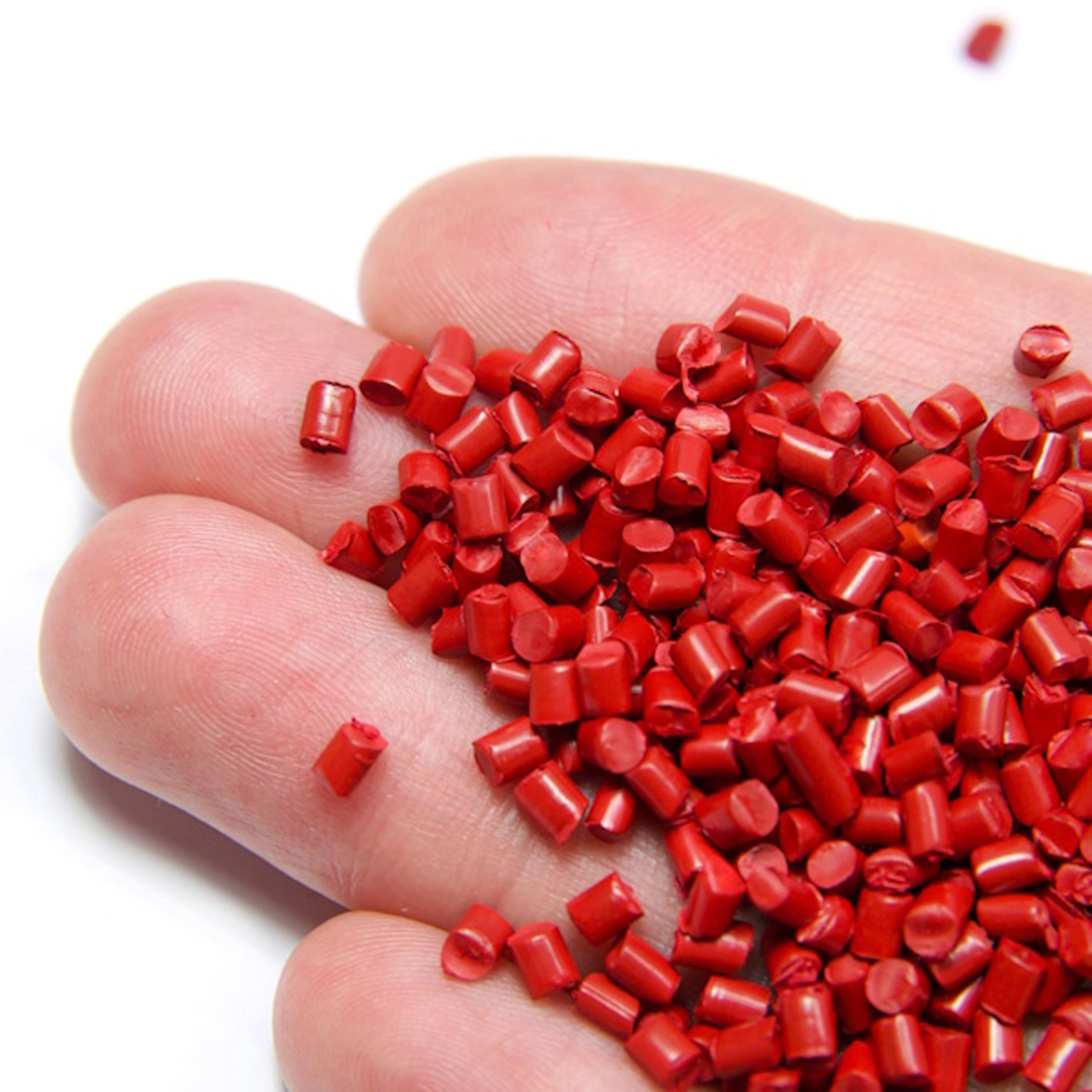Text: Thomas Masuch

Our route to 3D Dot takes us past a playground, ten-storey apartment blocks from Romania's Communist era, a pizzeria, and small cafés. In this rather lively residential area in the city of Brasov, you might not expect to stumble upon an advanced manufacturing facility, but that's exactly what you'll find when you step through a large glass door onto the small company’s first-floor premises located in one of the big apartment blocks.
We walk past colorful stools with bionically shaped frames, numerous still-wrapped filament spools, and of course, 3D printers from a wide range of manufacturers and sizes – the nozzles on some of them whizzing back and forth, creating components. Engineers and employees sit at two desks in between, taking care of new designs and customer orders. 3D Dot’s founder and CEO, Alexandru Dobre, emerges from a back room.
Located in the geographic heart of Romania, the traditional city of Brasov has around 250,000 inhabitants, a university (which is also active in 3D printing), an international airport, and production facilities for numerous international companies. These include Miele and Sennheiser, while Autoliv and Schaeffler are also heavily invested in 3D printing tech. In addition, Brasov offers a high quality of life with its beautiful old town and skiing and hiking opportunities in the nearby Carpathian Mountains.

Unlocking the potential of AM in Romania
Alexandru Dobre actually studied social sciences and only came across 3D printing technology in a roundabout way. “During my studies at the Copenhagen Business School, I completed a six-month internship at a start-up developing a new 3D printer with proprietary technology,” he explains. While analyzing the market and the potential of this technology, Dobre became very interested in the future of 3D printing and decided to start his own business back home in Romania.
He has been hooked on Additive Manufacturing ever since. Dobre now has his finger on the pulse of 3D printing in Romania and is very well connected in the industry as a reseller and AM service provider. In the former role, he represents the likes of Ultimaker, OMNI3D, Prusa, FormFutura, Shining3D, and CraftBot. 3D Dot and its five employees currently have a customer base that includes international industrial companies, universities, and young firms that want to launch their own products on the market. Even international military personnel stationed near Brasov come to his store from time to time to have the components they need printed.
Potential beyond the low-cost sector
Dobre is convinced that the defense sector will also have an increasingly strong influence on his business: “Now, in this new context – where war is at our doorstep – I believe that 3D printing will take a new turn in Romania,” he predicts. This is another reason why he and his company have invested in a 3D printer from OMNI 3D, a Polish manufacturer that has developed customized solutions for drone technology and other fields.

Images: 3D Dot

Romania has proven itself as a low-cost production site for international corporations. However, this also means that development centers are still more likely to be found in Germany or France, and the focus of Additive Manufacturing in Romania still tends to be in the low-cost sector. Large printers are more difficult to sell than a Prusa or Bambu Lab, as Dobre explains. “This is also due to the Romanian mentality, which is partly shaped by a focus on producing cheaply. Many people don't recognize the potential of innovation.” The CEO, who also works with numerous universities, hopes that future graduates will have a different mindset.
Steady growth
Nevertheless, the AM market in Romania is growing steadily, albeit from a fairly modest base: Dobre estimates the total market volume at around €8–10 million. For many large 3D-printing OEMs, this is probably not a reason compelling enough to build up their own sales networks for Romania, so resellers from eastern or southeastern Europe often serve the entire region instead.
Meanwhile, Chinese manufacturers are looking at the market a bit more intensively. “The general manager of a Chinese company even came to me in Brasov recently to win me over as a reseller,” Dobre reveals. Most Western manufacturers would hardly make the same effort. “Sometimes it's even a struggle to get an offer for a printer,” Dobre adds.
To ensure that the AM market in Romania grows more quickly in the future, numerous universities (in Brasov, Bucharest, and Cluj, for example) are teaching or conducting research in the field of 3D printing. This development is also supported by Dobre, who imparts his knowledge in the field of 3D printing to students at the University of Transylvania Brașov. According to the CEO, there is more than enough potential for further applications in Brasov, even off the beaten path in 3D printing. The city has numerous historical buildings, for example, some of which are in poor condition and in need of renovation. Since skilled restoration workers are also in short supply in Romania, there could be real opportunities in the field of additive construction. Dobre does not yet have a concrete printer in his portfolio, but perhaps the printer sizes in Romania will soon grow along with the opportunities at hand.





